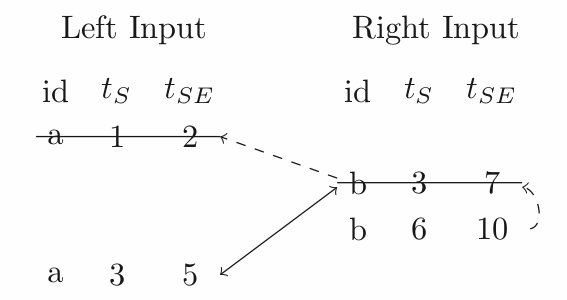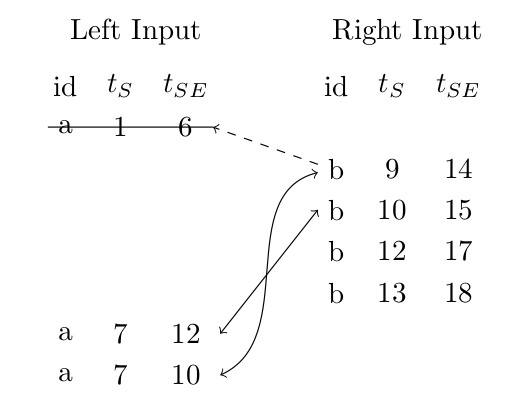...
When using an element window inside of the join, the blocking behavior is omitted, but the end-timestamp of the results cannot be known. Therefore, the end-timestamp is removed (set to infinity) in this case. If you want to keep the (semantically incorrect) end timestamp, you can use the keepEndTimestamp parameter and set it to true.
Behavior of the Element Join
The element join does not limit the number of elements in the respective SweepArea to the size of the window, but only joins the n newest possible matches. Therefore, if a new element enters the join operator, the older elements cannot simply be removed. This is depicted in the image below, where the behavior is wrong:
The second element on the right removes the previous element. Then, on the left side, an element enters the operator that would need to be joined with the now removed element. Hence, we don't get the results we need. Therefore, the Element Join in Odysseus behaves differently:
Here, the later element on the left is joined with "not-the-newest" element on the right, even though the element size on the right is set to one. Here we can see, that the elements on the left are joined with the newest possible element of the other side.

